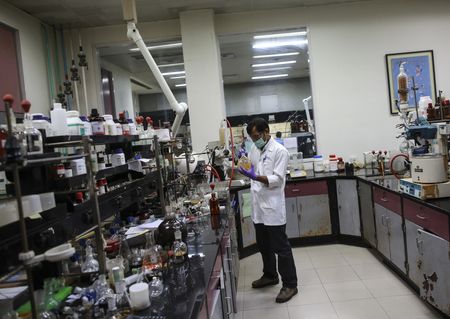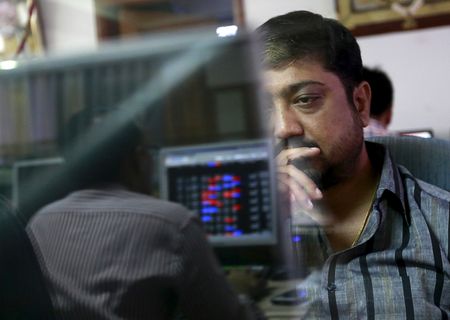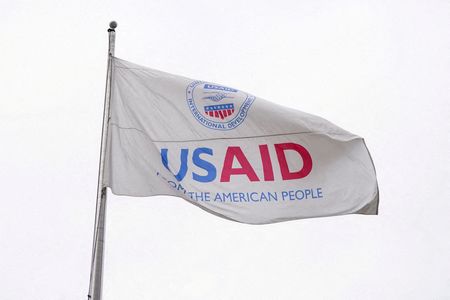By Chuck Mikolajczak
NEW YORK (Reuters) -The euro dropped on Friday, after a meeting between Ukrainian President Volodymyr Zelenskiy and U.S. President Donald Trump went up in flames, dashing hopes any peace deal could be reached soon in the war with Russia.
Trump and Zelenskiy traded verbal barbs during a meeting that was designed to help Ukraine convince the U.S. to not side with Russian President Vladimir Putin, who ordered the invasion of Ukraine three years ago.
Zelenskiy left the White House early following the meeting, without signing a deal between Ukraine and the U.S. over the joint development of natural resources.
“A big driving force of markets now is uncertainty on a lot of different levels, and this is just another part of that,” said Jack Mcintyre, portfolio manager at Brandywine Global in Philadelphia.
“It looked like we were moving towards progress on a peace deal or a ceasefire between Russia and Ukraine and maybe now that gets to come on hold, so you have to price in a little bit more uncertainty.”
The euro slumped after the meeting and was last down 0.29% at $1.0367 after dropping to $1.0359, its lowest since February 12.
After falling for several months from a more than one-year high hit in September, the single currency has shown signs of stabilizing, partly on hopes a peace deal could be reached.
The U.S. dollar initially edged lower on Friday after a reading on inflation was largely as anticipated by investors while consumer spending unexpectedly fell.
The Personal Consumption Expenditures (PCE) price index increased 0.3% in January, in line with expectations of economists polled by Reuters, after advancing by an unrevised 0.3% in December. In the 12 months through January, prices rose 2.5% after increasing 2.6% in December.
But consumer spending, which accounts for more than two-thirds of U.S. economic activity, dropped 0.2% last month after an upwardly revised 0.8% increase in December.
“I have a suspicion that this is idiosyncratic on the spending side in January. At the same time, I wouldn’t be surprised if we get real weakness in February and March in view of the decline in consumer confidence,” said Thierry Wizman, global FX and rates strategist at Macquarie in New York.
The dollar index, which measures the greenback against a basket of currencies, rose 0.23% to 107.61.
For the week, the dollar is up about 0.9% but down 0.8% for February, poised for its largest monthly decline since September.
Expectations the Federal Reserve will cut rates by at least 25 basis points (bps) at its June meeting edged up after the data, with markets pricing in a 79.1% chance of a cut, up from nearly 70% in the prior session, according to CME’s FedWatch Tool.
Fed officials have recently indicated they expect the central bank to hold rates steady until there is more clarity surrounding the impact of tariffs on inflation and a slowing economy.
Earlier this week, the greenback had fallen nearly 4% from a more than two-year high in January on renewed worries about U.S. economic growth and inflation as Trump shifted tariff deadlines on Canada and Mexico.
Investors are also bracing for the labor market impact from actions by the Department of Government Efficiency (DOGE) under Elon Musk.
On Thursday, Trump said his proposed tariffs of 25% on Mexican and Canadian goods would take effect on March 4, along with an extra 10% duty on Chinese imports, after some confusion earlier in the week as to whether they would be held off until April.
The Canadian dollar weakened 0.14% versus the greenback to C$1.45 while the Mexican peso was down 0.3% versus the dollar at 20.557.
Canada’s gross domestic product in the fourth quarter expanded by 2.6% on an annualized basis, surpassing widespread expectations for growth of 1.8%, as a jump in consumer spending, business investments and exports lifted growth.
Against the Japanese yen, the dollar strengthened 0.53% to 150.59 but has fallen nearly 3% for the month as investors largely expect the Bank of Japan to hike interest rates this year.
Sterling weakened 0.23% to $1.2568.
(Reporting by Chuck Mikolajczak; Additional reporting by Davide Barbuscia in New York; Editing by Andrea Ricci)











